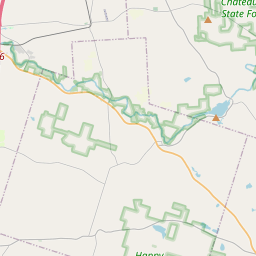Richland and Pulaski Civil War Soldiers Monument
Historical marker location:






April 12, 1861: The Civil War begins with the Confederate attack on Fort Sumter, located in South Carolina's Charleston Harbor.
April 15, 1861: President Abraham Lincoln issues a call for 75,000 volunteers to serve in the Union Army to suppress the rebellion.
May 24, 1861: The first major land battle, known as the First Battle of Bull Run (or First Battle of Manassas), takes place in Virginia. It ends in Confederate victory.
September 17, 1862: The Battle of Antietam in Maryland becomes the bloodiest single-day battle in American history, with heavy casualties on both sides. The Union forces, commanded by General George McClellan, manage to halt Confederate General Robert E. Lee's advance into Union territory.
January 1, 1863: President Lincoln issues the Emancipation Proclamation, declaring that all slaves in Confederate-held territories are to be set free. However, the proclamation does not immediately free all slaves in the United States.
July 1-3, 1863: The Battle of Gettysburg in Pennsylvania takes place, resulting in a significant Union victory and inflicting heavy casualties on Confederate forces. It marks a turning point in the war.
November 19, 1863: President Lincoln delivers the Gettysburg Address, emphasizing the principles of liberty, equality, and the preservation of the Union.
April 9, 1865: General Robert E. Lee surrenders to Union General Ulysses S. Grant at Appomattox Court House in Virginia, effectively ending the Civil War.
April 14, 1865: President Lincoln is assassinated by John Wilkes Booth while attending a play at Ford's Theatre in Washington, D.C.
May 10, 1865: Confederate President Jefferson Davis is captured, signaling the collapse of the Confederate government.
December 6, 1865: The Thirteenth Amendment to the United States Constitution is ratified, officially abolishing slavery throughout the country.
While this timeline provides an overview of key events, it is important to note that the Civil War spanned over four years, from 1861 to 1865, and encompassed numerous battles, campaigns, and political developments that shaped the course of American history.
The Woodstock Music Festival, which is considered a seminal moment in American cultural history, did not actually take place in the town of Woodstock, New York. The festival was held on a dairy farm in nearby Bethel, New York, about 60 miles south of Woodstock.
The arrival of Europeans in the 17th century brought significant changes to the area. French explorers were the first to discover the region, followed by Dutch and English settlers. The site where the city of Oswego now stands became an important trading post, attracting fur traders and leading to the establishment of Fort Oswego in 1727. The fort played a crucial role in the French and Indian War, as well as the American Revolution.
During the early 19th century, the construction of the Erie Canal brought economic prosperity to Oswego County. The canal connected the Great Lakes to the Hudson River, making Oswego a vital transportation hub for goods and people. The development of the canal also fueled the growth of industry in the county, particularly in the city of Oswego, which became a major center for shipping, manufacturing, and commerce.
In the 20th century, Oswego County's economy shifted towards manufacturing, particularly in the steel and automotive industries. The construction of power plants along the Oswego River, including the James A. FitzPatrick Nuclear Power Plant, brought new job opportunities and bolstered the county's energy sector. Today, Oswego County continues to thrive as a center for tourism, agriculture, and renewable energy production, with attractions like the Oswego Harborfest and the Salmon River Fishing Derby drawing visitors from near and far.
Oswego County Timeline
This timeline provides a concise overview of the key events in the history of Oswego County, New York.
- 1792: Oswego County is established as one of the original counties in New York State.
- 1796: The city of Oswego is incorporated, becoming an important port on Lake Ontario.
- 1816: The construction of the Oswego Canal begins, connecting the city of Oswego to the Erie Canal.
- 1828: The city of Fulton is incorporated, becoming a center for manufacturing and commerce.
- 1836: The town of Pulaski is formed, named after the Polish general Casimir Pulaski.
- 1850: The city of Phoenix is incorporated, known for its involvement in the salt industry.
- 1861: Oswego County supports the Union during the American Civil War.
- 1902: The city of Oswego experiences a major fire that destroys a significant portion of the downtown area.
- 1950s: The St. Lawrence Seaway opens, providing access to the Great Lakes and boosting trade in Oswego County.
- 1998: The county celebrates its bicentennial anniversary.
- 2010: The county experiences population growth, driven by economic development activities.